Emigrating to a new country is a difficult decision for anyone, and we were fully aware that uprooting our nine- and twelve-year-old children from the lives they had known since birth would come with its own set of challenges. But to give our children a freedom and independence we found impossible in our car-dominated East Vancouver neighborhood, in 2019, we chose to trade the peaks of British Columbia for the lowlands of South Holland.
According to Dr. Lia Karsten, associate professor of urban geography at the University of Amsterdam, geographical childhood for most kids these days can be classified into two types: indoor children: those who spend majority of their time indoors, largely of lower means and access; and the backseat generation: those who are shuttled from one activity to another in the backseat of a car. As motorized traffic increasingly dominated streets in the latter half of the 20th century, childhood was pushed from the public sphere—playing on the streets with friends under the watchful eye of neighbors—to more private, safe space like homes, backyards, and play gyms.
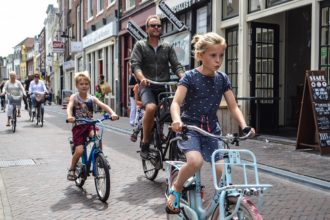
One of the most damning effects on both indoor children and the backseat generation is their growing disconnect from the world around them. When no longer able to explore their streets unsupervised by foot or bicycle, the space between their relative “zones” – homes, school, community centre, etc. – become vast oceans that are impassible without the assistance of their caregivers. Dr. Karsten describes this as “the city as an archipelago”, where, because travel is so intensely supervised and controlled, many children don’t know how to get from their home to any of their other regular destinations.
Our former Vancouver home was surrounded on all sides by four- and six-lane arterials each moving upwards of 40,000 cars per day. Because there were few crossings we felt comfortable enough to allow our children to navigate—due to fading markings or the prevalence of ‘beg buttons’ to ask permission to cross the street—they rarely walked independent of their parents.
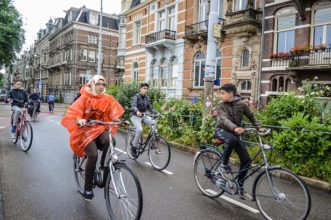
This lack of safe design is having a detrimental impact on kids everywhere, namely in the form of severely reduced activity level. In Canada, 93 percent of children don’t get the recommended daily amount of physical activity. That could be vastly improved by walking or cycling to and from school each day. Where 50 percent of American kids walked or cycled to school in 1959, fifty years later that was just 13 percent.
It doesn’t have to be that way. In the Netherlands, two thirds of school children walk or cycle to school and 75 percent for high school students. This dates back to policies established decades ago mandating the safer design of streets. In our current home of Delft, a 1970 Traffic Circulation Plan specifically addressed the mounting safety crisis due to the speed and volume of cars on their streets. The fundamental idea was that every child should be able to walk safely to school, a friend’s house, the shops and everywhere in between without having to cross a major arterial. Preventing cars from using neighborhood streets as thoroughfares created an environment where even decades later, young children can safely travel within their community.
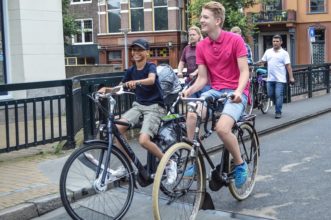
Delft’s safe and social streets allow our children to travel independently with friends inside and outside the city. They get more physical activity, they have more social interaction with their peers and they are happier, as they are no longer trapped inside their home or supervised by Mom and Dad. At a time when five to ten percent of children in the U.S. are diagnosed with depression, cities and towns can help them combat loneliness and inactivity by designing streets that allow our kids to feel more connected to their community.
Physical activity, the ability to experience the world independent of their parents, and the social relationships that can be built through walking and cycling among peers are critical to our children’s health and happiness. Streets designed to encourage this are a basic human right that all children should be able to enjoy, not just the Dutch. It just requires the commitment to prioritize the safety of our most vulnerable, allowing them to come back outside and experience the world on their own terms.
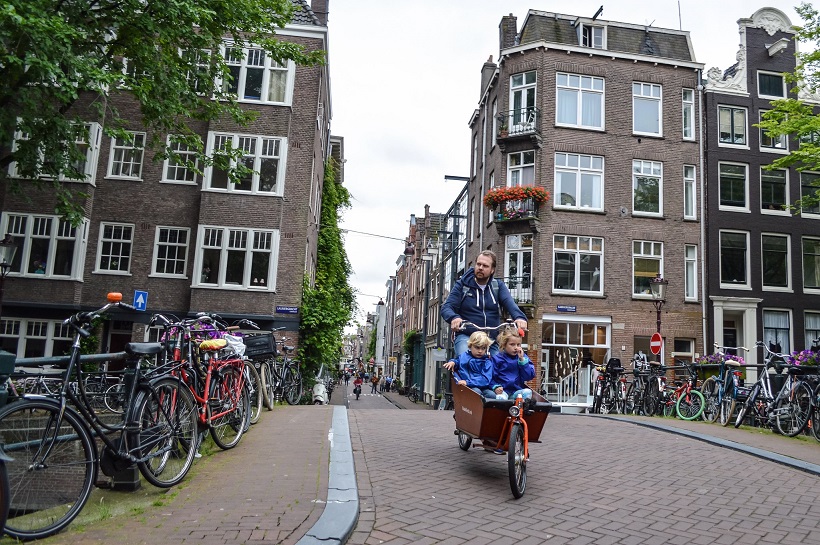
This is part 2 of the blog ‘Life is better on a bike’. Part 1, an interview by John Adams director Tracy Metz with Chris and Melissa Bruntlett, appeared on May 20th. Chris and Melissa are Canadian authors and urban mobility advocates. In 2019, they moved to the city of Delft in the Netherlands.
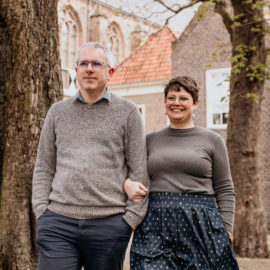
You can follow them on Twitter: @modacitylife or visit their website. Their book ‘Curbing Traffic’ appears at the end of June. John Adams readers get a 20% discount (use promo code BRUNTLETT) at islandpress.org. All pictures in this blog are by Chris & Melissa Bruntlett.
